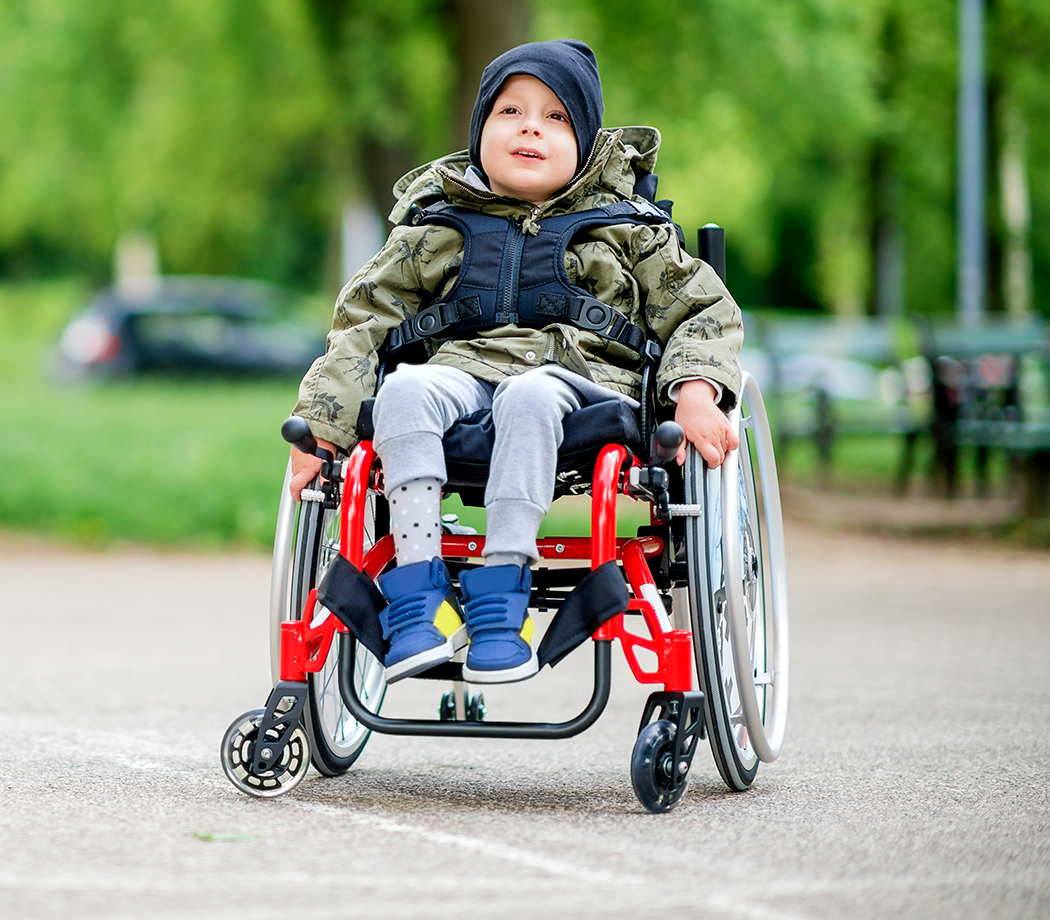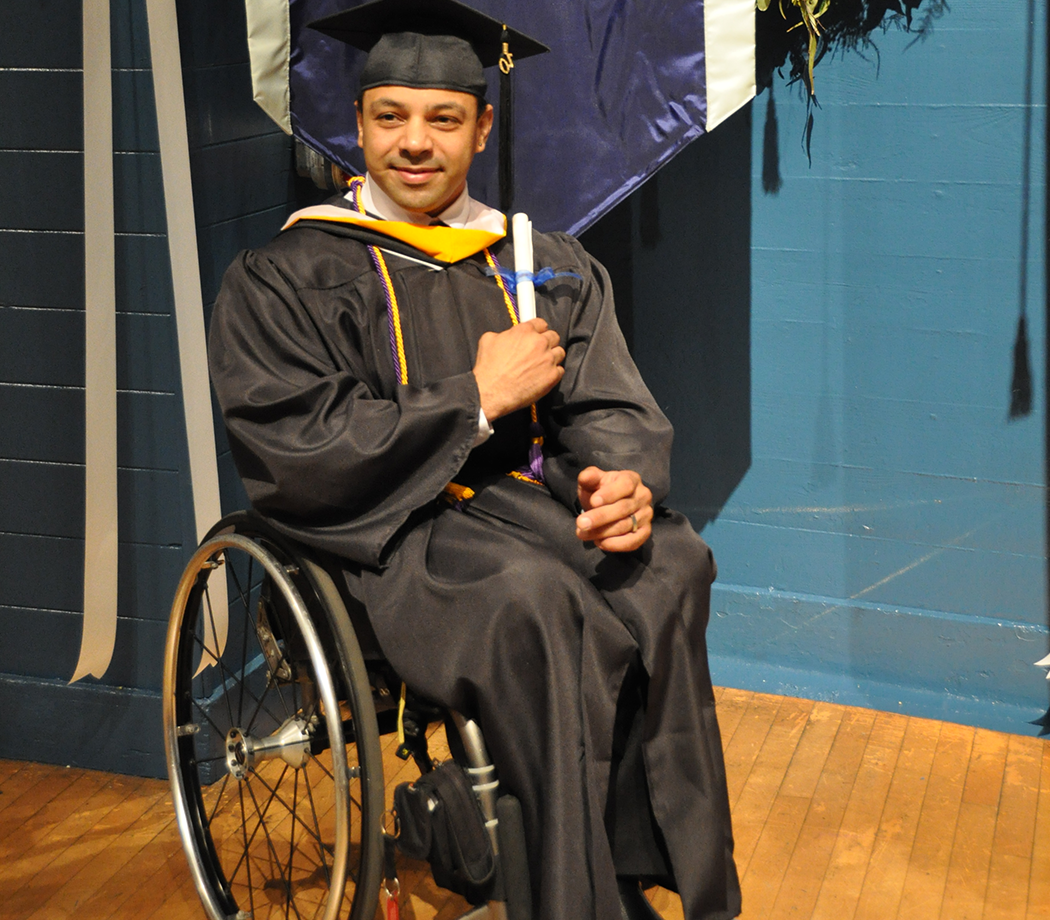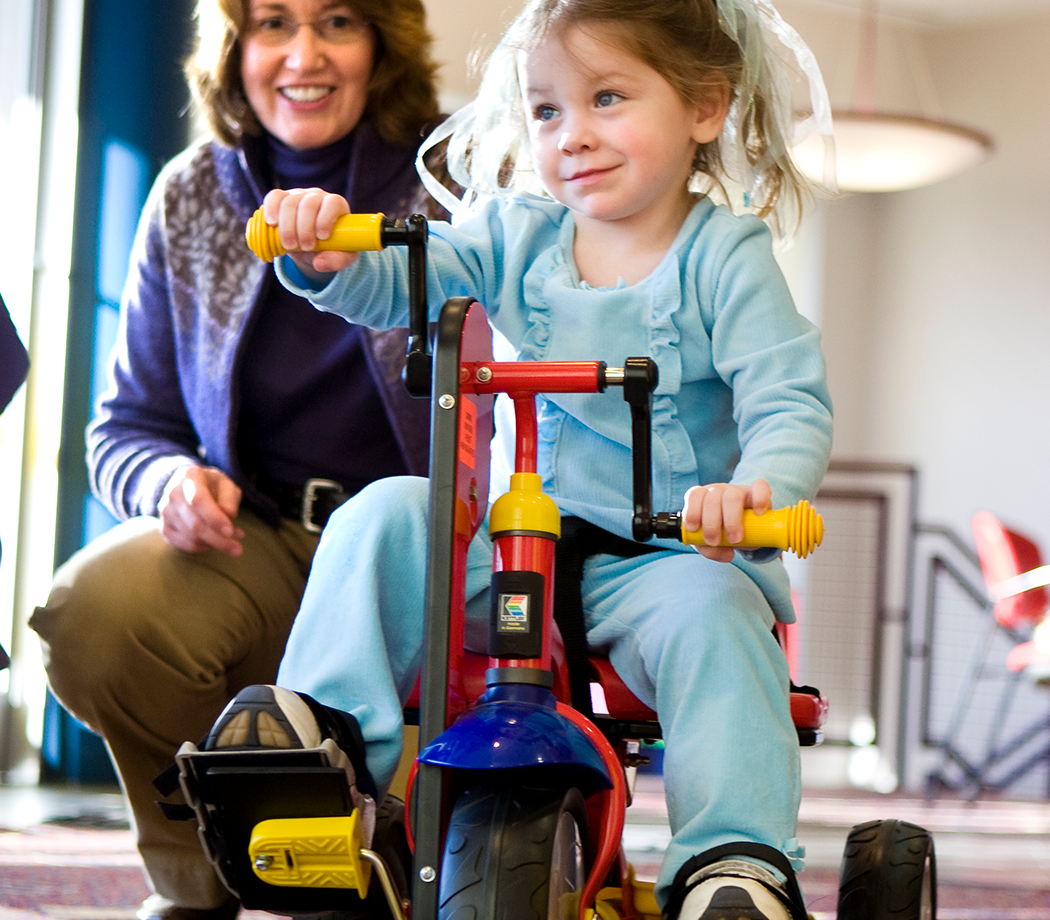Pediatric Rehabilitation Programs and Health Insurance
What to Expect as a Parent
Any time a family member becomes paralyzed, your world turns upside down. A new set of stressors enter your life and your entire world changes. When this happens to your young child or teen, it can seem overwhelming. As a parent, you will need to focus on a number of areas in your child’s life from the early stages of their recovery to long-term care.
When a child is injured, a parent must first understand the injury and then begin planning for the rehabilitation phase.
Again the first step is to educate yourself about spinal cord injury and the conditions that could impact your child’s health and well-being as a result of paralysis. Please visit our Newly Paralyzed section created for those who have recently sustained an injury with a breakdown of frequently asked questions that will prepare you as a parent and caregiver.
Once your child has stabilized, it is important to work with your doctors to map out a rehabilitation program and investigate facilities that will support your child’s recovery and ongoing health.
It is important to realize that your child’s age will play a key role in what rehabilitation centers are available to them.
Pediatric Rehabilitation Centers
A primary difference in treating children is that care becomes family centered. The parents are involved in nearly every aspect of physical care and must also nurture the child’s psychological growth. It is important to foster expectations that the child will grow into an independently functioning adult.
It is never too early to begin researching rehabilitation centers. Acute rehabilitation stays are short and your child will be moving on to a rehabilitation center quicker than you might expect.
By starting your research early, you can make a well informed choice on rehabilitation centers based on your child’s level of injury, your family’s needs, and your insurance guidelines.
Many facilities have a minimum age requirement for admission because they are not equipped to meet the special needs of young children and their families.
A starting point in locating pediatric centers is the Commission on Accreditation of Rehabilitation Facilities or CARF. It is important to look for a special designation of spinal cord injury as well as having the facility be a CARF designated rehabilitation center.
There are very few programs that are specifically CARF accredited for children with spinal cord injury or disease. However, many of the major children’s hospitals have rehabilitation programs that can meet your child’s special needs. Additionally, many adult rehabilitation centers accept teens.
Questions to Ask
Some questions that you might want to ask a pediatric rehabilitation center are:
- Do you have a specialized program for pediatric spinal cord injured/disease patients?
- How many children with spinal cord injury/disease does your facility admit each year?
- Do you have a specialized program for adolescents with spinal cord injury/disease?
- How many adolescents with spinal cord injury/disease does your facility admit each year?
- Do you have a school program so my child can continue their class work?
- Are siblings and friends allowed to visit?
- What level of involvement do you expect from the parent(s)?
- Do you provide training in care issues for the parent(s)?
- Do you provide family housing near the hospital?
- Do you offer services to school districts that will ease my child’s transition back home?
- Is there a child life specialist on staff?
- Are there therapeutic recreation programs as well as an opportunity to go off the hospital grounds?
- My child is on a ventilator, how many vent dependent children do you treat each year?
- What is your success rate for weaning from a ventilator?
- May I tour the facility?
- Do you have a list of former patients/ families I can talk to?
Health Insurance
Your health insurance will play a critical role in determining where your child can go for rehabilitation. In the early days post injury, it is important to contact your insurance carrier and ask for a case manager based on your child’s injury and future healthcare needs.
The insurance case manager, in collaboration with the acute care hospital case manager, can assist you in selecting a rehabilitation program that meets your child’s and family’s needs and is covered by your insurance. If you disagree with the decision of your insurance company, you can file an appeal.
If you do not have insurance or are underinsured, it is important to apply for Medicaid as well as Social Security for your child. Each state has financial guidelines as well as eligibility criteria that take into consideration the severity of the disability.
If you do not qualify for Medicaid, the Children’s Health Insurance Program (CHIP) was designed to assist families who can not afford a private health insurance policy, but who make too much money to qualify for Medicaid.
CHIP was created by the federal government but individual states operate their own program. Visit Medicaid and CHIP for more details.
Resources
If you are looking for more information on how to navigate your child’s spinal cord injury/disease or have a specific question, our Information Specialists are available business weekdays, Monday through Friday, toll-free at 800-539-7309 from 9am to 8pm ET.
Additionally, the Reeve Foundation maintains a fact sheet on children with disabilities with additional resources from trusted Reeve Foundation sources. Check out our repository of fact sheets on hundreds of topics ranging from state resources to secondary complications of paralysis.
We encourage you to reach out to other support groups and organizations, including:
- Kosair Charities Center for Pediatric NeuroRecovery at the University of Louisville provides activity-based therapies to promote recovery from neurological injury and improve the quality of life for children and their families.
- Parents Helping Parents (PHP) offers lifetime guidance, support and services to families of children with any special needs.
- Parent Advocacy Coalition for Educational Rights (PACER) aims to expand opportunities and enhance the quality of life of children and young adults with disabilities and their families.
- Shriners Hospitals: children up to the age of 18 with orthopaedic conditions, burns, spinal cord injuries and cleft lip and palate are eligible for admission and receive all care in a family-centered environment at no charge – regardless of financial need.
- U Can Do emphasizes what you can do, not what you can’t. Promotes ‘ability awareness’ to help kids focus on what is possible, regardless of their challenges.



